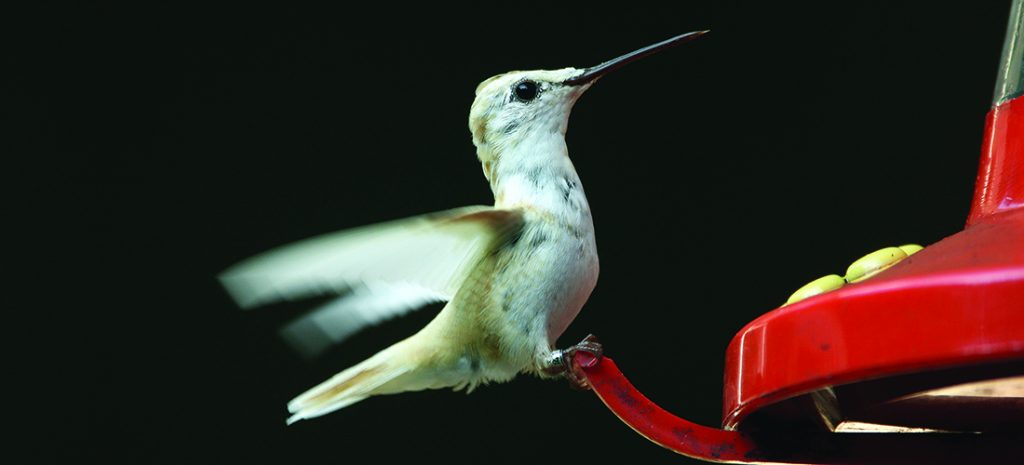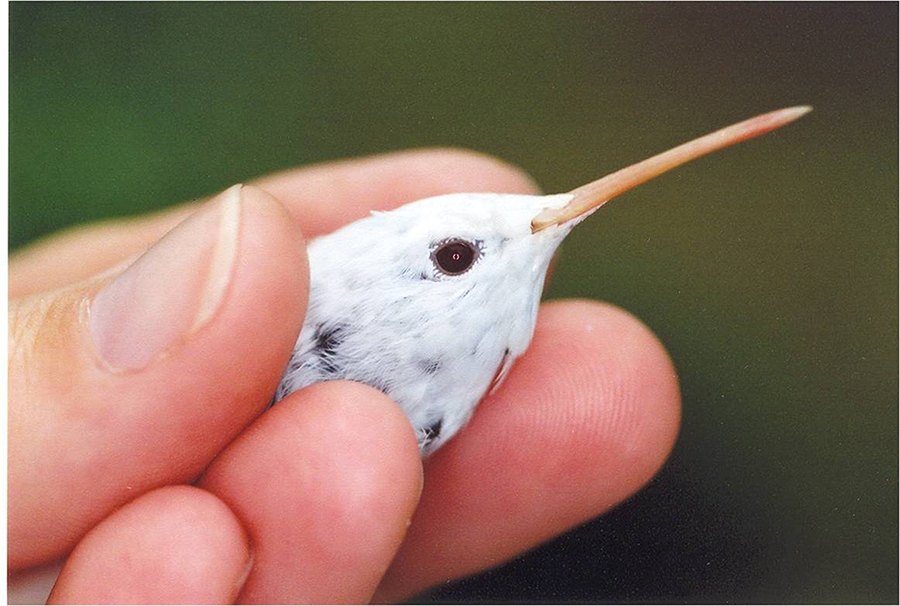Birdwatch

Rare and Mysterious
On the lookout for the unusual white hummingbird

By Susan Campbell
If you happen to look out the window and see a flash of white at your hummingbird feeder or flowers, you may not be seeing things. Late summer is when I receive at least a report or two from hosts who have glimpsed a rare pale-colored hummingbird. Given the number of people who feed hummers here in North Carolina, birds in unusual plumage tend to get noticed. And given the network of bird enthusiasts I am familiar with, reports of unusual hummingbirds find their way to my phone or computer pretty quickly.
White hummingbirds include both leucistic (pale individuals) as well as true albinos (completely lacking pigment). Gray or tan hummers are more likely than full albinos. Light-colored individuals have normal, dark-colored soft parts such as dark eyes, feet and bills. Albinos, on the other hand, are very rare. These snow-white birds that sport pink eyes, feet and bills have been documented fewer than 10 times in our state. Only three have been banded and studied closely here to date.
It is not unusual for people to think they are seeing a moth rather than a hummingbird when they encounter a white individual. They do not realize that these beautiful creatures are possible. As much as we now know that they do exist, we know very little about white hummingbirds. Opportunities to study these unique individuals are few and far between. What we do know is that they tend to appear in July or August as young of the year and do not survive into their second year. White feathers are very brittle and likely cannot withstand the stresses of rapid wing beats and long-distance migration. Another curious characteristic is that all of these eye-catching birds have been female. So it is likely that, for whatever reason, this trait is genetically sex-linked.
The first white hummer that I managed to band was a creamy bird in Taylortown a number of years ago. She was an aggressive individual that roamed the neighborhood terrorizing the other ruby-throateds. The first true albino I documented was in Apex in Wake County, and that individual was even more aggressive; chasing all of the other birds that made the mistake of entering her airspace. For me to have a chance to study a white hummer, I must get word of it quickly before the bird heads out on fall migration. I have missed more than one by less than 24 hours.
The last white hummer I had the privilege to examine close up was an albino a decade ago in Washington, N.C. A mostly white hummingbird gave me the slip in Charlotte four years ago. So, I am way overdue to band yet another. Who knows who I might encounter this season? Each one is so unique. I simply hope to at least hear about another of these tiny marvels before all of the hummingbirds in the central part of our state have headed south. OH
Susan Campbell would love to receive your wildlife sightings and photographs at susan@ncaves.com.
